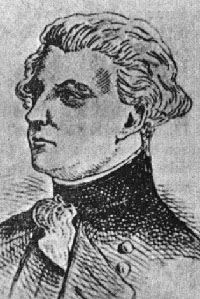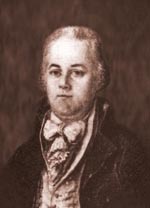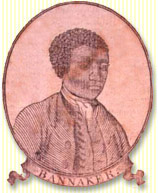| |
Charles L. Westbrook Jr. Ph.D America’s Oldest Secret: The Talisman of the United States - The Mysterious Street Lines of Washington D.C. - Signature Of The Invisible Brotherhood. 123 p. 1990 [PO Box 54 Ayden, NC 28513 USA] ^
What may be the first of these accusations appeared in "Freemasonry: [Is it] Satan’s Door to America?" by J. Edward Decker, founder and International Director of Saints Alive in Jesus, in his undated newsletter, Free the Masons Ministries, possibly printed in the late 1980s. This included a map of Washington. D.C., with a pentagram overlaid on the streets. In 1991, Ron Campbell, director of the Jeremiah Project, claimed that the four cornerstones of the District of Columbia, laid with Masonic ceremony in April of 1791, revealed a sinister conspiracy, and that the design of the city’s streets revealed Freemasonry’s "bizarre pagan beliefs." Richard Hoagland, author of "The Monuments of Mars and other books on an alleged Masonic/NASA conspiracy, Nation of Islam leader Louis Farrakhan in his October 17, 1995 address to the Million Man March, David Bay, Director of Cutting Edge Ministries in N. Attleboro, Massachusetts and David Icke, among others, have all claimed that the street plan, or at least the architecture, of Washington DC proves a masonic conspiracy. ^
Washington Architecture 1791-1957. Prepared by a Committee of the Washington-Metropolitan Chapter American Institute of Architects. Reinhold Publishing Corporation, New York, U.S.A.. 1957. LCCCN 57-10358. 96 p. 5 3/4" x 8 3/4". p. 12. ^
Ibid. p. 14. ^
Elizabeth S. Kite, L'Enfant and Washington 1791-1792 New York, Arno Press & The New York Times: 1970, (Baltimore: The Johns Hopkins Press, 1929). p. 21. Washington’s support for L"Enfant and lack of input into the plan is noted on p.48, as is Jefferson’s forwarding to L'Enfant the plans for Frankfort-on-the-Mayne, Carlsruhe, Amsterdam, Srasburg, Paris, Orleons, Bordeaux, Lyons, Montpelier, Marseilles, Turin and Milan.
^
Washington Architecture p. 36. ^
Washington Architecture p. 5. ^
Stanley Elkins & Eric McKitrick, The Age of Federalism: The Early American Republic, 1788-1800 (New York: Oxford University Press, 1993).
Bob Arnebeck, Through A Fiery Trial: Building Washington, 1790-1800 (Lanham, Md: Madison Books, 1991).
William Tindall, History of the City of Washington (Knoxville, TN: 1914).
Writings of Washington, Bicentennial Edition, United States Government Printing Office, Vol. 12 ^
H. Paul Caemmerer, The Life of Pierre Charles L'Enfant Planner of the City of Washington, Da Capo Press, New York, Washington DC: 1950. p.12. ^
The Scottish Rite Journal, March 2011, Washington, DC. (ISSN 1076-8572) pp. 10-12, citing lodge records. ^
Patmos Lodge No. 70 in Ellicott City, Maryland, named after the Ellicott brothers, has no record or tradition of Andrew Ellicott’s Masonic membership. Social Lodge No. 1, PHA, of Washington, DC has no record of Bannaker’s membership or attendance. Also, see: David Ovason. p. 456 n59. ^
Cover illustration [b&w image]. Benjamin Bannaker’s Pennsylvania, Delaware, Maryland, and Virginia Almanac, for the Year of our Lord 1795; Being the Third after Leap-Year. Printed for and sold by John Fisher, Stationer. Baltimore. Note that Bannaker is more often spelt Banneker.
^
|
 Detail from an engraving on paper March 1792 by Thackara and Vallance, Philadelphia, Geography and Map Division, Library of Congress. Note the incomplete five point star shaped street plan immediately north of the White House.
Detail from an engraving on paper March 1792 by Thackara and Vallance, Philadelphia, Geography and Map Division, Library of Congress. Note the incomplete five point star shaped street plan immediately north of the White House.
![[Grand Lodge]](../../images/hedn.jpg)


 Benjamin Bannaker
Benjamin Bannaker